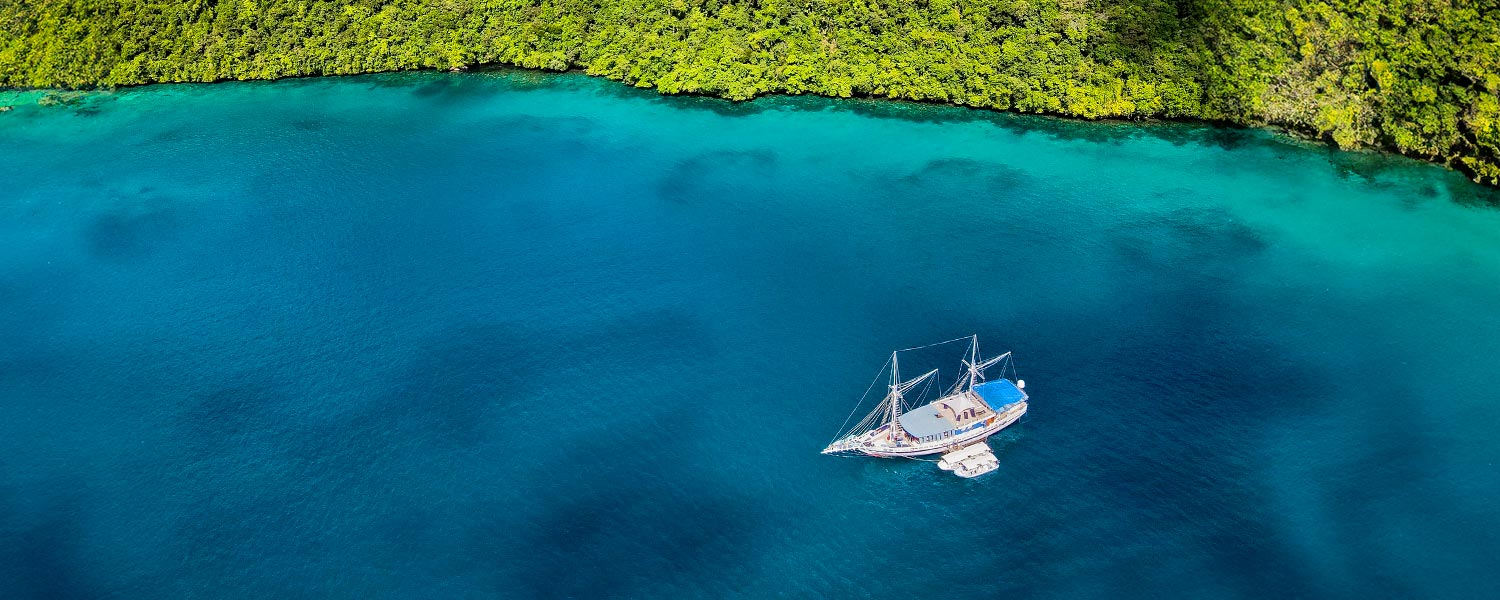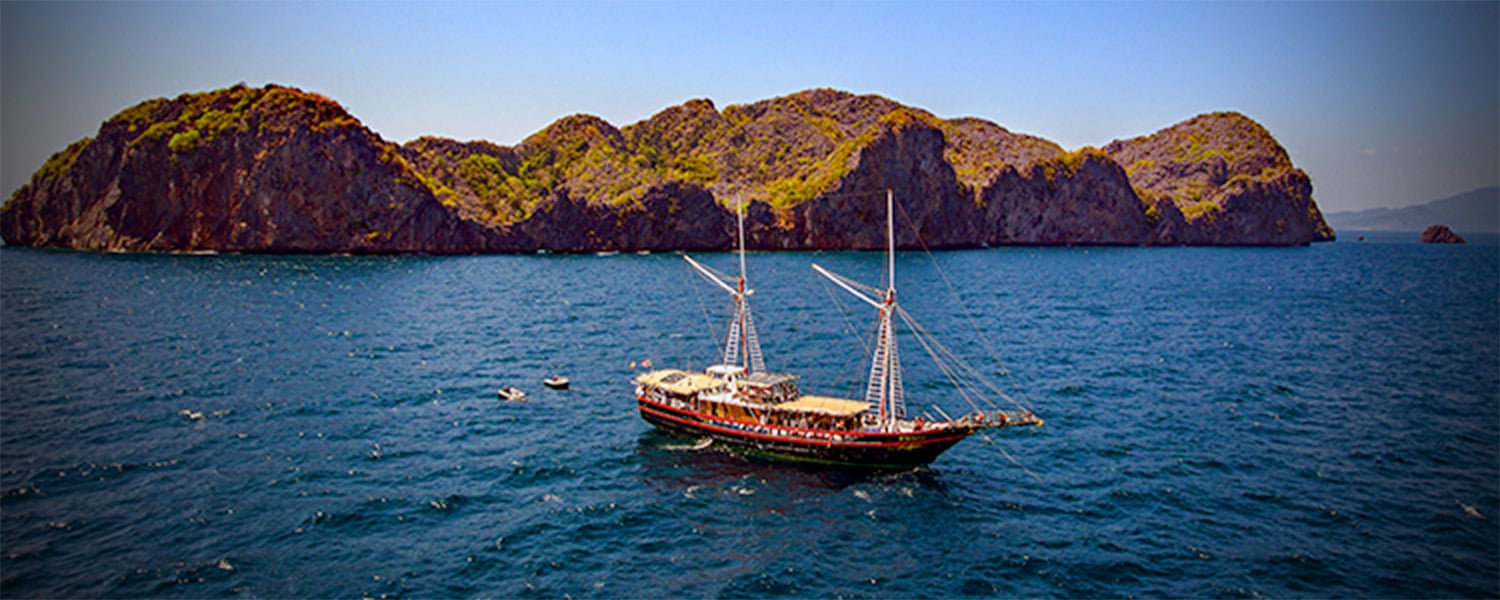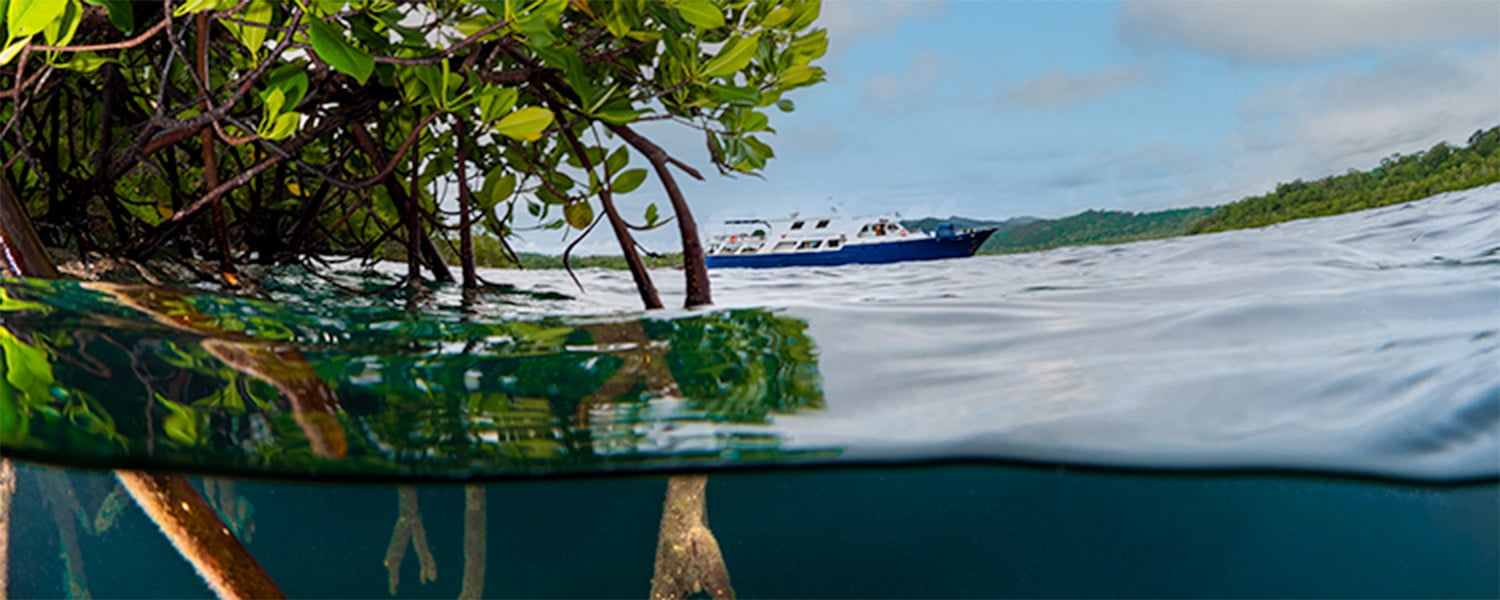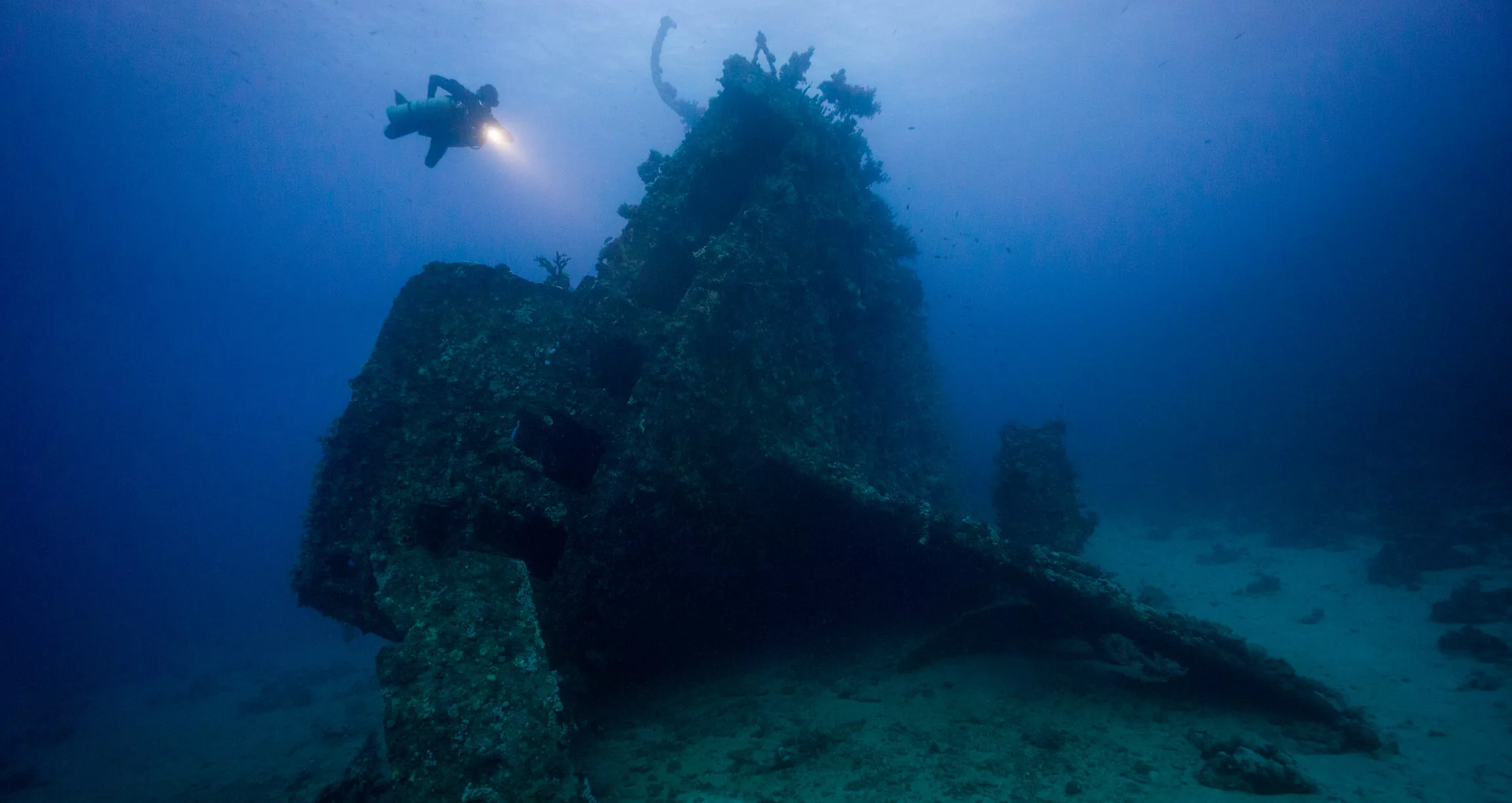You surface from an amazing dive having seen a fish you’ve never seen before; what is this fish? Sod’s law, you didn’t have your camera with you and so the only record you have is your memory. You’re trying to describe it. But other than “fish-like” and “grey-silver coloured”, you just cannot find the right words to describe it! So you spend the next days looking frantically in the fish ID books to never find it.
Does this story sound familiar? We have all been there and we all know how frustrating this can be! While it is impossible for us and our crews to know the names of every single fish on the planet, we can definitely help you finding your mystery creature – so help us help you!
Next time you spot a fish you want to know about, try to remember to check the following points as they will definitely narrow the search for “your” fish. At the very least it will be more useful for your guide than “it looked like a fish shape, you know?”.
Location, location, location
The place and location you saw “that” fish will definitely help trying to identify it. Certain fishes are pelagic and will only be seen in the blue. An example would be the fusiliers. Others are more the stay-at-home types and like to spend time right next to their pieces of corals or anemones, like our dear clown fish. Lastly, some are benthic and while they move around, they tend to stay close to the bottom – like a goatfish feeling the seabed with its “moustache”.
As they say in real-estate, location, location, location! This is key in fish ID and will ensure that you can eliminate safely certain fishes families.

Alone or in a group?
You can then refine your search, by remembering whether “that” fish was alone or not. Fishes have very set group behaviour. It is extremely rare for example to see a snapper alone, they tend to be in groups. A Napoleon wrasse, on the other hand, tends to be a solitary individual. By mentally noting if a fish was alone or not, it will help once again to eliminate some more fish families and narrow down the options.
Markings and colours
You might think that by stating the colour, this would make it easy to know what that fish was. Let us tell you a secret: it does not! Often fishes will change colour during their lifespan, or due to breeding, or because they have an ability to rapidly change colour to blend in (like pipefishes). A grouper will go through several colours depending how old they are and parrotfishes, for example, will change colour during breeding season. Whether they change colour slowly or fast, it really doesn’t always help to identify a fish – although it is often the first descriptive we would use.
What would be very important to note though are markings. A bit like a tattoo on a human, markings help a lot in identifying a fish! Markings tend to be a lot more reliable than colours and here are the options on markings that will help us help you.

As with colours, size is not always very helpful. Fishes grow – the same as a human. If aliens were landing in a nursery and reporting that the species they observed is about 90cm, it would not be representative of our species.
Behaviour
The behaviour of that fish you spotted can also be a great help in finding out what it is! Was it swimming erratically? Was it “sitting” on a piece of coral? What is it shy and hiding? All these behaviours can be representative of a fish family. You would not find a goby swimming around and playing with a diver, but it will 100% sure be hiding in its hole!
Shape
As we saw above, colours and sizes will not always help, but shape is a very good pointer to help ID your fish. It can be either the shape of the body, the shape of the tails the shape of the mouth, and/or the shape of the fins. All of these details will be helpful to narrow down your fish family.
Body shape
This is one of the easiest methods to use to really nail down your fish. Some fishes are long (like a barracuda) while some are rounded (like a pufferfish). You can find in this diagram the 6 most common fish body shapes:

And the next diagram shows the general shapes of many common tropical fishes.
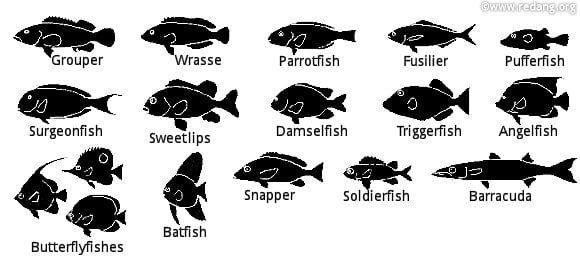
Mouth shape
Strangely, a fish mouth can sometimes be the detail that will crack the mystery. Here are details you should pay attention to:
- How thick or thin are the lips?
- Where is the mouth positioned: at the top or underneath or straight ahead?
- Are the lower and upper lips the same? Or is one bigger?
- Does the fish have a moustache or whiskers? We call these “barbels”.
All these details can be really helpful. An elongated mouth will definitely point you towards the needle fish, while barbels are often sported by goatfishes. Sharks have inferior mouths, parrotfishes have terminal mouths, and groupers have superior mouths.

Fin shape
Most fishes will have the usual sets of fins:
- Dorsal fins – these are the ones at the top
- Pectoral fins – these are the ones on the side
- Pelvic and anal fins – these are the ones at the bottom
The actual shape, size, and number of fins can be a nice clue to identifying your fish. Here are the three types of fins commonly found in fishes:

Groupers, damsels, wrasses, surgeonfish, and angelfish have one continuous dorsal fin, while barracuda, goatfish, gobies, soldierfish and cardinalfish have 2 dorsal fins.
It is not always easy to make out the fins visually as they can be very translucent and thin. The soft flowing dorsal fins on some species can also appear folded down close to the body.
Tail shape
The tails of fishes also come in a variety of shapes. Fusiliers, jacks, soldierfishes, and cardinal fishes typically have forked tails. Wrasses and parrotfishes typically have truncate or rounded tails. Tuna and some jacks have lunate tails that are crescent shaped. Lanceolate tails, such as those on coelacanths and comet fishes, look like a lance or arrow head.
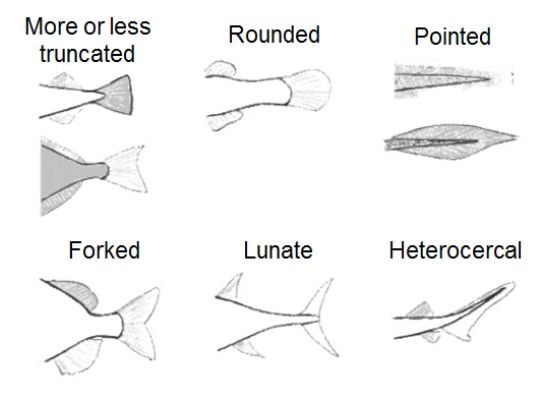
We can be tricked
Even with all of the above help, nature can sometimes trick us. The perfect example would be our dear cleaner wrasse. Cleaner wrasses are quite easy to identify due to their behaviour and locations. They set up a “shop” for other fishes to line up and they eat the parasites and dead skins in a perfect mutualistic relationship benefiting all parties.
But BEWARE: the “false cleaner wrasse” blenny (a complete other family) pretends to be a cleaner wrasse. It looks exactly the same and behaves in the same way than a normal cleaner wrasse. Until it actually eats a piece of that unsuspecting customer which was just there to get cleaned.
With all these tips, you will be able to pick up this ID book and skip directly to the right family. And then hopefully find your fish.
Head over to Indonesia or Philippines. Both these destinations feature some of the best biodiversity in the world. This will be the real test for your fish ID skills.
